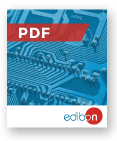
NEW Biomedical Engineering leaflet
With our complete Biomedical Engineering area, EDIBON gives answer to the academic demand for teaching and learning concepts of Biomedical Engineering, in an easy and practical way.
DownloadBiomedical Engineering studies the implementation of engineering knowledge in the field of biology and medicine. The combination of instrumentation and electronic control systems and the application of mathematical algorithms and physical and chemical principles allow Biomedical Engineering to investigate and develop new techniques and devices for the resolution of clinical problems. This discipline covers from the design of diagnostic elements and medical software tools to physiological analysis for the study of the heart or the nervous system.
View moreBiomedical Engineering has evolved over the years thanks to scientific and technological advances. At present, devices such as vital signs monitoring systems or diagnostic devices facilitate medical care work. The development of image analysis methods such as X-rays, ultrasounds and magnetic resonance allow the study of the human organism clearly and quickly. In addition, telemedicine and hospital management software are used.
The future of Biomedical Engineering has a long way to go, since today's society requires fast and efficient medical solutions. The electronic devices used day to day will allow remote patient monitoring, following the vital signs values to be able to analyze the symptoms before a health problem and, even, prevent that possible problem. Another trend of Biomedical Engineering is the simplification of laboratory tools. Systems, such as Lab On a Chip (LOC), integrate laboratory functions into a single chip. New robotic surgery techniques, new organic materials for the manufacture of artificial tissues and regenerative tissues or 3D printing of artificial organs will make it possible to resolve future medical needs.
View Products14.1.- BIOMECHANICS
14.2.- BIOMEDICAL ELECTRONICS
14.3.- BIOMEDICAL EQUIPMENT